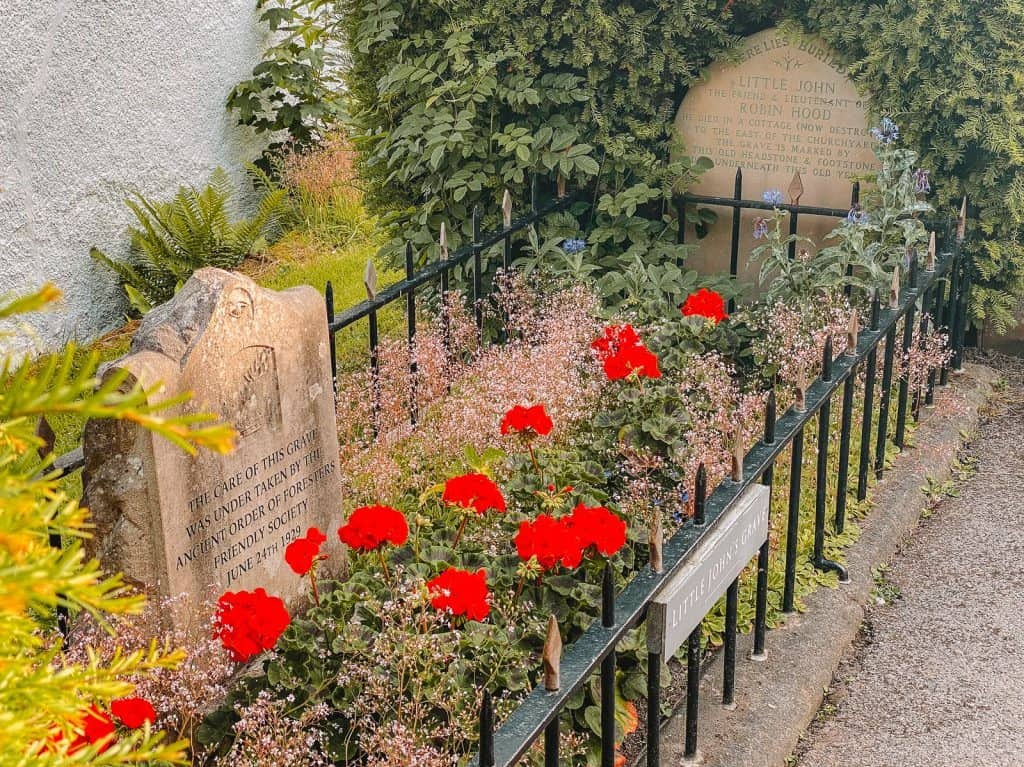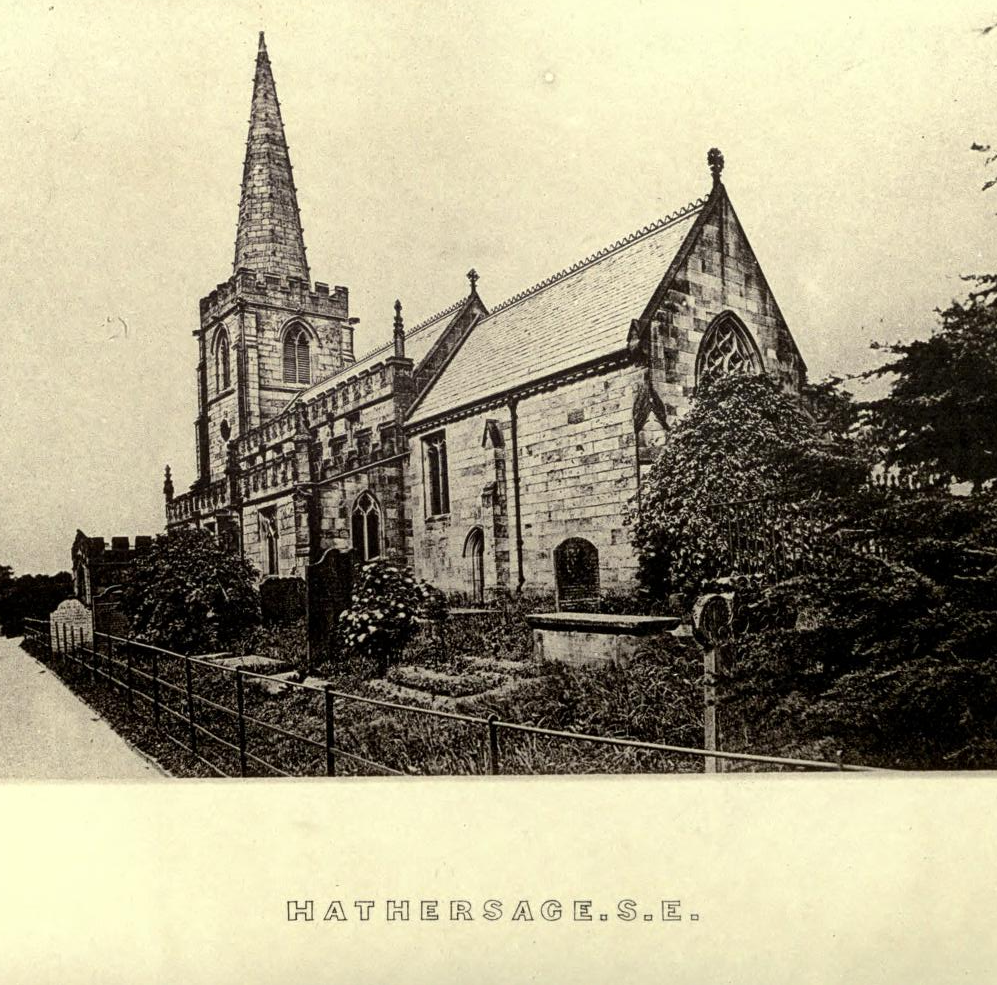Little John’s Gravestone
POSTED 3/12/23
There is a stone in the porch of Hathersage Church (St. Michael and All Angels), which is thought to be part of Little John’s original gravestone. J. Charles Cox (Notes on the Churches of Derbyshire, volume two, published in 1877) informs us that: ‘One fragment, which was found under the flooring of the church where the old pulpit stood, has been preserved, and is now fixed in the ground against the east wall of the churchyard, near the entrance gates. It consists of the upper half of a wide sepulchral slab, having double marginal lined incised round it, and the head of a floriated cross with fleur-de-lis terminations; there are also small shields in each of the upper angles. The stem of the cross passes between the Roman initials “L. J.” These initials are of a much later date than the cross, which we consider to be of early fourteenth century work, and show that the stone has at some time in its history been appropriated to commemorate a second interment. Popular ideas, ever ready to fasten on the smallest detail to corroborate a favourite tradition, were eager to associate this stone, at the time of its disclosement, with Little John, and pointed with triumph to the initials of his nickname.’ This suggests that Cox was hardly convinced, but J. W. Walker thought otherwise. In his True History of Robin Hood, published in 1952, Walker states: ‘The upper half of the original headstone, measuring 5 feet in length by 4½ feet in breadth, has been placed within the south porch of the church; it bears an incised cross flory, the shaft of which lies between the letters L.I.’ There can be no doubt that this is the same stone mentioned by Cox, and it is also mentioned by Martin F. H. Hulbert, in his book Let These Stones Live, published in 1982?: ‘In the parish is an ancient sepulchre slab, probably 13th century, is in the porch which some believe was Little John’s original tombstone. Engraved upon it is a cross (shaped rather like a fleur-de-lys – a design used in our processional cross) there are also two shields and the letters ‘LI’ thought to be of a later date. It was found under the flooring of the church where the pulpit stood.’
There are two stones that adorn Little John’s grave, which were placed by The Ancient Order of Foresters in 1929, however there were two earlier stones (see, Little John’s Grave Stones).
The stone in the porch of St. Michael and All Angels, Hathersage, October, 2023. I have been informed that it is roughly three and a half feet high, which is at odds with Walker’s measurement of five feet. Just as Cox mentioned, the letters L I are visible (I was a medieval form of J) on either side of the stem, and so is part of the cross with fleur-de-lis terminations and the incised double lines round the edges of the stone. The small shields in each of the upper angles are not visible. Originally the stone would have been a longer slab, that was probably laid over a grave. Could this be the ‘faire tombestone with an inscription’ that was noted by Roger Dodsworth in 1619? (See, Little John’s Grave Stones).
Little John’s grave, nearly fourteen foot long, in the churchyard of St. Michael and All Angels, Hathersage, July 2021, by Sophie, Third Eye Traveller (online, used with permission).
The view of the church from the south-east in J. Charles Cox’s Notes on the Churches of Derbyshire, volume two, published in 1877. Cox tells us that Little John’s grave is to the south-west of the church.


